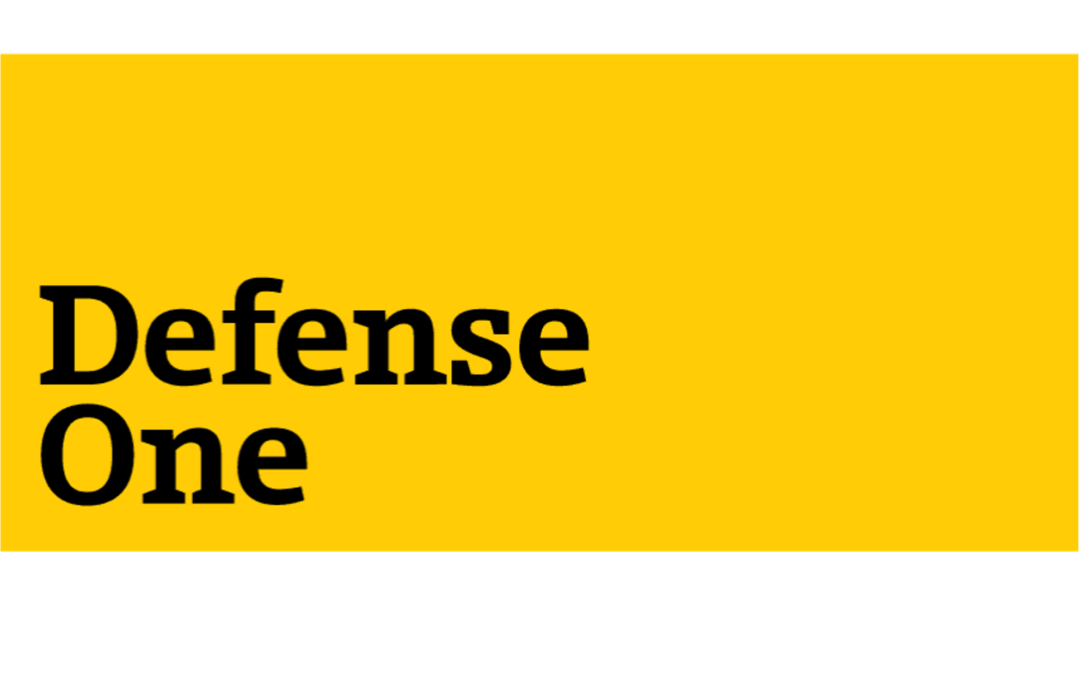

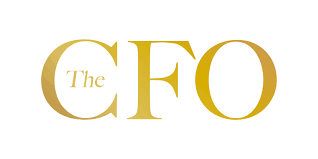
Your Success (as CFO) is Killing Innovation

What is Service Design & Why Should You Care?
What if a tool had the power to delight your customers, cut your costs, increase your bottom line, and maybe double your stock price? You’d use it, right?
That’s precisely the power and impact of Service Design and service blueprints. Yet very few people, especially in the US, know, understand, or use them. Including me.
Thankfully, Leala Abbott, a strategist and researcher at the intersection of experience, innovation, and digital transformation and a lecturer at Parsons School of Design, clued me in.
What is Service Design?
RB: Hi, Leala, thanks for taking the time to talk with me today.
LA: My pleasure! I’m excited about this topic. I’ve managed teams with service designers, and I’ve always been impressed by the magical way they brought together experience strategy, UX, and operations.
RB: I felt the same way after you explained it to me. Before we get too geeked up about the topic, let’s go back to the beginning and define “service.”
LA: Service is something that helps someone accomplish a goal. As a result, every business needs service design because every business is in the service industry.
RB: I’ll be honest, I got a little agitated when I read that because that’s how I define “solution.” But then I saw your illustration explaining that service design moves us from seeing and problem-solving isolated moments to seeing an integrated process. And that’s when it clicked.
LA: That illustration is from Lou Downe’s talk Design in Government Impact for All . Service Design helps us identify what customers want and how to deliver those services effectively by bringing together all the pieces within the organization. It moves us away from fragmented experiences created by different departments and teams within the same company to an integrated process that enables customers to achieve their goals.
Why You Need It
RB: It seems so obvious when you say it. Yet so often, the innovation team spends all their time focused on the customer only to develop the perfect solution that, when they toss it over the wall for colleagues to make, they’re told it’s not possible, and everything stops. Why aren’t we always considering both sides?
LA: One reason, I think, is people don’t want to add one more person to the team. Over the past two decades, the number of individuals required to build something has grown exponentially. It used to be that one person could build your whole website, but now you need user experience designers, researchers, product managers, and more. I think it’s just overwhelming for people to add another individual to the mix. We believe we have all the tools to fix the problem, so we don’t want to add another voice, even if that voice explains the huge disconnect between everything built and their operational failures.
RB: Speaking of operational failures, one of the most surprising things about Service Design is that it almost always results in cost savings. That’s not something most people think about when they hear “design.”
LA: The significant impact on the bottom line is one of the most persuasive aspects of service design. It shifts the focus from pretty pictures to the actual cost implications. Bringing in the operational side of the business is crucial. Building a great customer journey and experience is important, but it’s also important to tie it back to lost revenue and increased cost to serve
Proof It Works
LA: One of the most compelling cases I recently read was about Autodesk’s transition to SaaS, they brought in a service design company called Future Proof. Autodesk wanted to transition from a software licensing model to a software-as-a-service model. It’s a significant transition not just in terms of the business model and pricing but also in how it affects customers.
If you’re a customer of Autodesk, you used to pay a one-time fee for your software, but now you are paying based on users and services. Budgeting becomes messy. The costs are no longer simple and predictable. Plus, it raises lots of questions about the transition, cost predictability, control over access, managing subscriptions, and flexibility. Notice that these issues are about people managing their money and increasing costs. These are the areas where service design can truly help.
Future Proof conducted customer interviews, analyzed each stage of the customer journey, looked at pricing models and renewal protocols, and performed usability studies. When they audited support ticket data for the top five common customer issues, they realized that if Autodesk didn’t change their model, the cost of running software for every customer would increase by 40%, and profit margins would decrease by 15% to 20%.
Autodesk made the change, revenue increased significantly, and their stock price doubled. Service design allows for this kind of analysis and consideration of operational costs.
How to Learn More
RB: Wow, not many things can deliver better service, happier customers, and doubling a stock price. Solid proof that companies, and innovation teams in particular, need to get smart on service design. We’ve talked a lot about the What and Why of Service Design. How can people learn more about the How?
LA: Lou Downe’s book is a great place to start Good Services: How to Design Services That Work. So is Woo, Wow, and Win: Service Design, Strategy, and the Art of Customer Delight by Thomas A Stewart and Patricia O’Connell. I also recommend people check out The Service Design Network for tools and case studies and TheyDo, which helps companies visualize and manage their service design.
Conversations were edited for length and clarity.

3 Maps to Innovation Success
Several years ago, my now-husband and I were in London. It was his first time in the city but my 4th or 5th so, naturally, I talked a big game about how well I knew the city and how I would be, with the help of our handy tourist map, our tour guide.
Things were going fine until I took the wrong road leading away from Buckingham Palace. I thought we were heading straight to Parliament. We were not.
After a walk that lasted far longer than it should have, he nervously asked,” We’re lost, aren’t we?”
With wounded pride and astounding stubbornness, I declared, “We’re not lost. I know exactly where we are. It’s just not where we want to be.”
Maps are incredibly useful. Until they’re not.
Innovation literature has more maps than a Rick Steves’ guidebook, and most are quite useful. If they’re used at the right time for the right purposes in the right way by the right people (which is a lot of rights that have to be right).
Here are three of my favorites – 2 classics and a new one that blew my mind
Stakeholder Map:
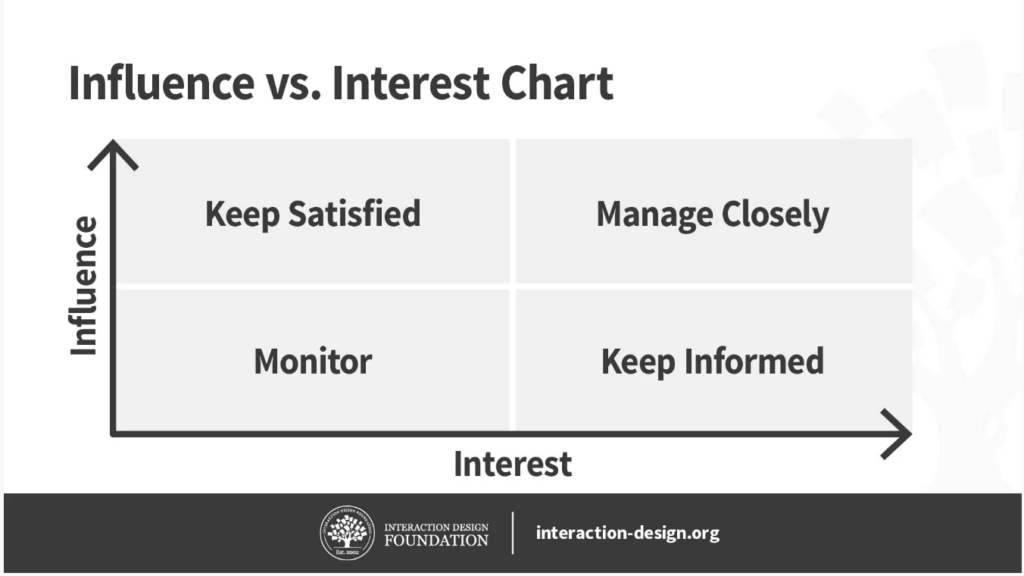
Avoid getting blind-sided, buttering up the wrong people, or ignoring potential champions
- What it is: A visual representation of the people, roles, and groups who (1) are involved in and affected by a challenge or system and (2) have the power to affect or are likely to be affected by the proposed solution. Stakeholders can be internal and/or external to the organization
- Why you need one: To prioritize where and how you spend your time understanding, influencing, communicating, collaborating, persuading, and selling
- When to create it: At the very beginning of a project and then updating as you learn more
- How to use it: Interaction Design Foundation explains it simply and concretely:
- Brainstorm who your internal AND external stakeholders are
- Prioritize them using an Influence x Interest two-by-two matrix
- Engage and communicate based on their place in the chart
Journey Map
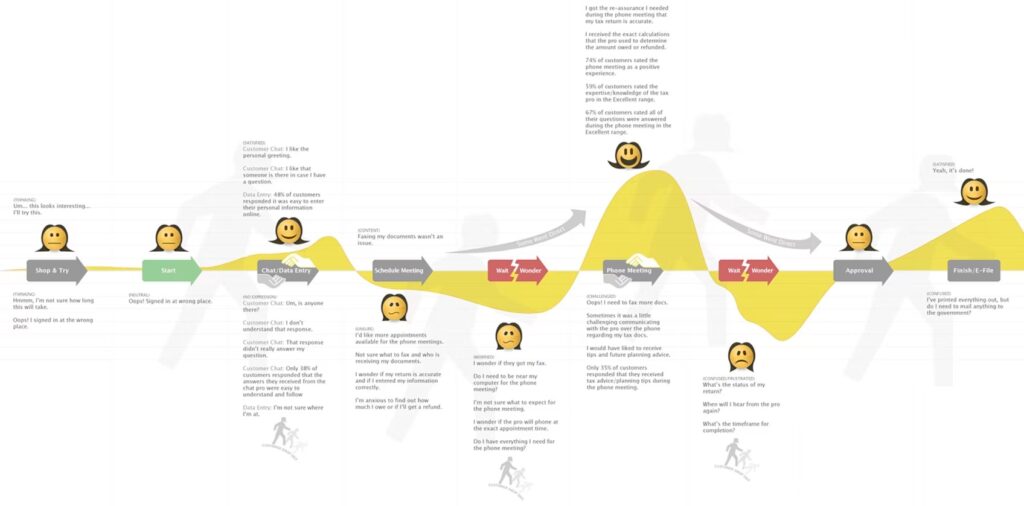
Spot opportunities to create radical value through incremental innovations
- What it is: A visual representation of what your customer/consumer/user does, thinks, and feels as they move from awareness of a need/want/JTBD to loyalty to a solution. Journey maps should dig deep into moments where customers currently interact with your organization and highlight opportunities where interaction can and should occur
- Why you need one: To identify opportunities for innovation by surfacing customer current pain points between your customer and your business (or competitors if your business isn’t there and can/should be)
- When to create it:
- Create the basic structure (start and end point) or a hypothesized journey before primary research.
- During research, work with individual stakeholders to develop their maps using (and adapting) your initial structure.
- At the end of research and before ideation, synthesize insights into the smallest possible number of maps to use as inspiration for solution brainstorming
- How to use it: IDEO offers simple instructions and tips based on practical use:
- Brainstorm who your internal AND external stakeholders are
- Prioritize them using an Influence x Interest two-by-two matrix
- Engage and communicate based on their place in the chart
Service Map
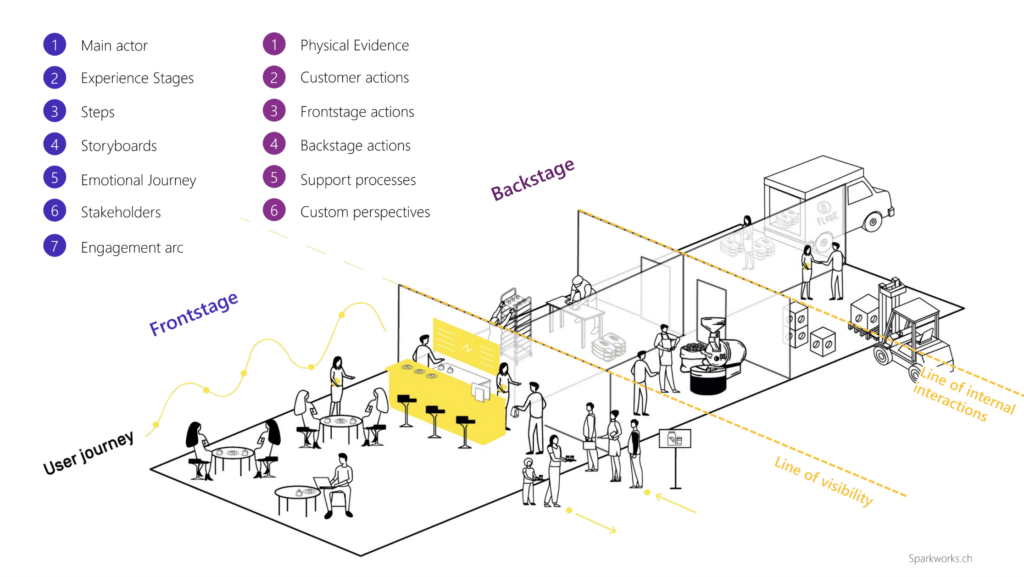
Make journey maps actionable (and see how your innovation affects your operations)
- What it is: A visual representation of the people, touchpoints, processes, and technology required/desired both frontstage (what customers see) and backstage (what happens behind the scenes). Similar to process documentation with a special focus on the customer
- Why you need one: Doing something new (i.e., innovating) often requires changes to internal operations, organizations, and processes, but these changes are often ignored or unexplored until late in the process, potentially slowing or stopping the development and launch of a new solution.
- When to create it: Draft a baseline current state once you have 50% confidence in the general area or type of solution to be created (e.g., we want to improve the use of digital tools in classrooms, so let’s create a service map for our current digital offerings and operations). Then continually revise and update it as the solution/service develops.
- How to use it: Interaction Design Foundation offers practical instructions and advice.
- Identify the service to be blueprinted
- Identify the customers to be service
- Examine the customers’ experience of the process (customer journey map)
- Identify the role and impact of employees, processes, technology, and other operational and organizational factors on the service
- Link activities together to show a natural flow between frontstage and backstage
What’s your favorite map (innovation or otherwise)?

You’re Not a Leader if You Don’t Do This 1 Thing
Being a leader isn’t easy. You must BE accountable, compassionate, confident, curious, empathetic, focused, service-driven, and many other things. You must DO many things, including build relationships, communicate clearly, constantly learn, create accountability, develop people, inspire hope and trust, provide stability, and think critically. But if you’re not doing this one thing, none of the other things matter.
Show up.
It seems obvious, but you’ll be surprised how many “leaders” struggle with this.
Especially when they’re tasked with managing both operations and innovation.
It’s easy to show up to lead operations.
When you have experience and confidence, know likely cause and effect, and can predict with relative certainty what will happen next, it’s easy to show up. You’re less likely to be wrong, which means you face less risk to your reputation, current role, and career prospects.
When it’s time to be a leader in the core business, you don’t think twice about showing up. It’s your job. If you don’t, the business, your career, and your reputation suffer. So, you show up, make decisions, and lead the team out of the unexpected.
It’s hard to show up to lead innovation.
When you are doing something new, facing more unknowns than knowns, and can’t guarantee an outcome, let alone success, showing up is scary. No one will blame you if you’re not there because you’re focused on the core business and its known risks and rewards. If you “lead from the back” (i.e., abdicate your responsibility to lead), you can claim that the team, your peers, or the company are not ready to do what it takes.
When it’s time to be a leader in innovation, there is always something in the core business that is more urgent, more important, and more demanding of your time and attention. Innovation may be your job, but the company rewards you for delivering the core business, so of course, you think twice.
Show up anyway
There’s a reason people use the term “incubation” to describe the early days of the innovation process. To incubate means to “cause or aid the development of” but that’s the 2nd definition. The 1st definition is “to sit on so as to hatch by the warmth of the body.”
You can’t incubate if you don’t show up.
Show up to the meeting or call, even if something else feels more urgent. Nine times out of ten, it can wait half an hour. If it can’t, reschedule the meeting to the next day (or the first day after the crisis) and tell your team why. Don’t say, “I don’t have time,” own your choice and explain, “This isn’t a priority at the moment because….”
Show up when the team is actively learning and learn along with them. Attend a customer interview, join the read-out at the end of an ideation session, and observe people using your (or competitive) solutions. Ask questions, engage in experiments, and welcome the experiences that will inform your decisions.
Show up when people question what the innovation team is doing and why. Especially when they complain that those resources could be put to better use in the core business. Explain that the innovation resources are investments in the company’s future, paving the way for success in an industry and market that is changing faster than ever.
You can’t lead if you don’t show up.
Early in my career, a boss said, “A leader without followers is just a person wandering lost.” Your followers can’t follow you if they can’t find you.
After all, “80% of success is showing up.”